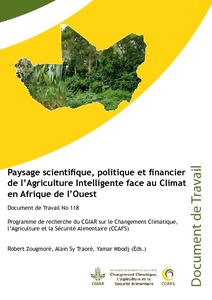Participación de las mujeres y los menores en la agricultura de América Latina y el Caribe
Participating in REDD+ Measurement, Reporting, and Verification (PMRV): Opportunities for Local People?
Assessing forest changes is the baseline requirement for successful forest management. Measurement, Reporting, and Verification (MRV) are three essential components for achieving such assessments. Community participation in resource monitoring and management is increasingly seen as a scientifically efficient, cost-effective, and equitable way to employ such practices, particularly in the context of REDD+. We developed a multidisciplinary approach to study the feasibility of Participatory MRV (PMRV) across three sites along a forest degradation gradient in Indonesia.
Options for agriculture at Marrakech climate talks: messages for SBSTA 45 agriculture negotiators
SBSTA 45 in Marrakech represents a unique opportunity for Parties to decide on the future of agriculture within the UNFCCC. The process of discussions on issues related to agriculture initiated at COP17 in Durban 2011 culminates at COP22 in Marrakech 2016. The explicit reference to food security in the preamble of the Paris Agreement and the Intended Nationally Determined Contributions which prioritize agriculture as a sector for adaptation and mitigation actions, provide a foundation for Parties to develop appropriate frameworks to support
Participatory Action Research on Climate Risk Management, Bangladesh
The rural populations of southern Bangladesh are some of the most vulnerable communities in the world to the future impacts of climate change. They are particularly at risk from floods, waterlogged soils, and increasing salinity of both land and water. The objective of this project was to analyze the vulnerability of people in four villages that are experiencing different levels of soil salinity.
Orinoquia colombiana: sabanas de la altillanura: clima y uso de la tierra
Pastoralist Areas Resilience Improvement through Market Expansion (PRIME) in Ethiopia: Mitigation co-benefits of livestock productivity
Pastoralist Areas Resilience Improvement
through Market Expansion (PRIME) showed a
notable decrease in emission intensity (GHG
emissions per unit of meat or milk). PRIME
enabled farmers to increase production
significantly, between 24% and 96%, which led
to a decrease in emission intensity ranging from
-4% to -42%.
? Due to improvements in feed quantity, PRIME
projected an increase in average animal weight
for all livestock (8.3 million head), which resulted
in an increase in GHG emissions by an
Paysage scientifique, politique et financier de l’Agriculture Intelligente face au Climat en Afrique de l’Ouest
Le secteur agricole joue un rôle primordial au sein de la Communauté économique des États d’Afrique de l’Ouest (CEDEAO). En tant que pilier de l’économie, il touche à la vie de la société à plusieurs niveaux, dans la mesure où les économies nationales et les emplois, les revenus et la sécurité alimentaire des populations en dépendent.
Perfil socio-economico de cinco comunidades del municipio de puerto Lopez
Planning climate adaptation in agriculture
This meta-synthesis of national climate change adaptation plans, policies and processes spans twelve countries at various stages of adaptation planning and implementation, in three priority CCAFS regions: West Africa (Burkina Faso, Ghana, Mali, Niger, Se?negal), East Africa (Ethiopia, Kenya, Tanzania, Uganda) and South Asia (Bangladesh, India, Nepal).
Policy recommendations
This final chapter of the book offers a set of policy recommendations. It presents some typical win-win outcomes, including technologies suited for forest poor areas, labour intensive technologies promoting intensification to replace land extensive farming practices, and promoting agricultural systems that provide environmental services similar to those of natural forests.









